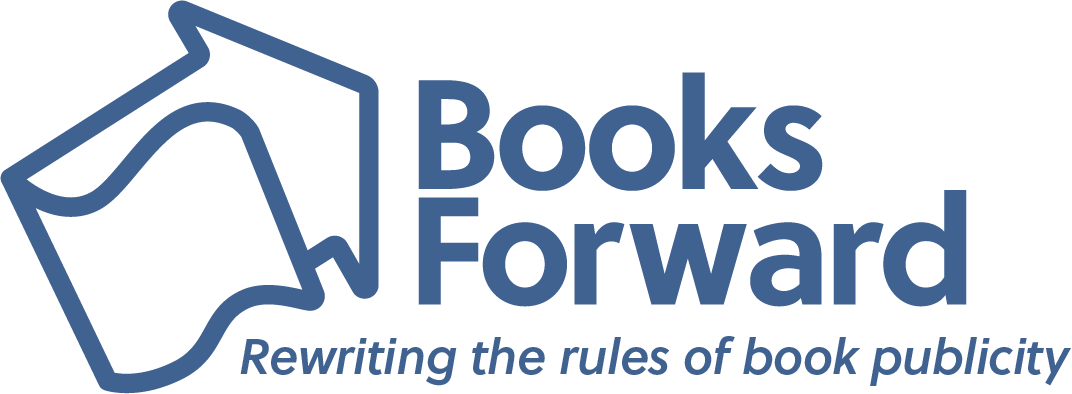Nadiez Bahi investigates the space between science and religion
 In his new novel, author Nadiez Bahi asks an age-old question: Does God exist? Releasing on April 27, 2021, “Rethink God” explores the histories of religion and scientific understandings of human existence in a realistic but fictional narrative that Foreword Clarion Reviews says will “inspire personal and social change at the deepest levels.”
In his new novel, author Nadiez Bahi asks an age-old question: Does God exist? Releasing on April 27, 2021, “Rethink God” explores the histories of religion and scientific understandings of human existence in a realistic but fictional narrative that Foreword Clarion Reviews says will “inspire personal and social change at the deepest levels.”
Does God exist? This is probably the most complex question anyone can seek an answer to. What makes it even harder to reach an answer are the traps that we typically fall into in our attempts to do so. One common trap is linking religion to God as two sides of the same coin and using this link to prove or disprove the existence of God. Another trap is overestimating the ability of science and philosophy to provide a solid answer for the question. Unfortunately, most books and debates on the topic of God today fall so easily in these traps and many more. Mostly because they are rooted from, motivated and driven by an agenda that seeks to prove one claimed righteous position on the topic.
“Rethink God” is a very different book. It doesn’t force one opinion or show one side of the argument like most other books do. Instead, it presents novel points of view on the most prominent subjects of debate on the topic of God. It unveils major fallacies of both agenda-driven atheism and religious enthusiasm. More importantly, it provides an original, unprejudiced approach to help each person reach their own answer for the big question. And that is what any person really needs to get there.
About the Author
Nadiez Bahi is the pseudonym of the author whose life’s work is “Rethink God,” a novel releasing on April 27, 2021. For years, he researched science, philosophy, consciousness and religion seeking wisdom and answers on the topic of God. Bahi chooses to keep his identity private as the book’s content is not acceptable in the part of the world that he lives in.
In an interview, NADIEZ BAHI can discuss:
- His cultural and religious background as well as why he strongly believes that it’s imperative for people to draw their own conclusions about the existence of God
- The extensive research that went into writing “Rethink God”
- Why he decided to lay the book out in a series of text message conversations
- Investigating the philosophical argument that questions the co-existence of evil with an omnibenevolent, omniscient and omnipotent God
- Exploring the search for a creator through the universe’s different stages starting from the big bang to the formation of galaxies, stars and habitable planets
An Interview with Nadiez Bahi
1. Your book addresses the question: “Does God exist?” –– what inspired you to ask and seek answers for this question? Was there a moment in your life that made you want to investigate this more?
I was born and raised in a modern Muslim family. My parents taught us the basics of religion but were always against extremism and blindfolded submission to religious leaders. I was very curious about God for as long as I can remember. In my first week in school, I made friends with a Christian. I started asking him about what that meant to be one, and I just wouldn’t stop. By the weekend, he had given me books to read about Christianity. My parents weren’t very thrilled about it. I remember many times in my childhood asking my dad questions about God until he would state that some matters are simply unexplainable. However, these deeper thoughts faded away in the years that followed.
In 2006, “The Da Vinci Code” had exploded in certain social circles in my country. It wasn’t uncommon to find two people with that very same book in a tiny café. For people who had no interest in any existential questions at the time, its impact was gigantic. The possibility that some cornerstones of the most widely spread religion on earth have been completely altered throughout history left us in shock, regardless of whether this was true or not. Having the gift of the internet at hand, we rushed to search for fallacies, conspiracy theories, holes in religions and eventually in the idea of the existence of God. That was the first time in my life I started questioning many notions that I took for granted before.
After a couple months of reading, I decided to abandon the topic altogether. I realized the research needed much more attention than I could dedicate at the time. I had more critical missions at hand, building a career and deciding which direction I wanted to take in life in. Years passed. In 2013, a personal incident happened to me that made answering this question my first priority in life. I felt like I couldn’t move another inch without finding my answer. I call this condition “intolerable questioning.” I started reading everything on the topic of God that I could get my hands on. The more I read the further I got from reaching an answer, and the more clearly I saw that there were the two camps fighting a war against each other on pages of books I read; the camp of atheism and the camp of religion. Not only did that experience leave me not wanting to join one side, it made me despise the wickedness both camps adopt to win the war, corrupting many facts, blurring many truths that could lead someone like me to reach an answer. That was the time I decided I want to investigate the topic much deeper, from a whole new point of view, that is so far from the toxic war fought between the two camps.
2. Has writing this book changed your perspective on and relationship to God/religion?
Of course it did. Unlike most writers who take interest in this topic, I didn’t start the book with a solid answer that I seek to prove. I had a very clear idea about what is wrong with most of the material available on the topic today. If I am to put it in one word, it would be “rigidness.” Imagine how open or objective one is while writing a book when he or she chooses a title stating that “God exists” or “God doesn’t exist” before writing the first page.
So, when I started writing the book, I tried as much as I could to suppress my personal views on the topic at the time and focus on laying the foundation for answering the question, without knowing where this journey was going to take me. This actually made the book-writing journey extremely interesting. I think it’ll be quite effortless for the readers to sense the evolution of my ideas as they flip through the pages of the book. With regards to my personal take on spirituality, I can say that I definitely landed at a very different place than when I started the book. Strangely enough, I’ve become more accepting to other views, as it became clear to me that the approach to answer the God question is quite individual and personal. This is exactly why I prefer to stay silent on my relation to God/religion now, because what I am sure of is that it’s my own, not meant to be everyone’s, and more importantly it’s subject to change until the beating muscle pushing blood through my arteries seizes to do so.
3. Do you believe that science and philosophy prove or disprove God?
The key point here is to know which God is in question. Is he God of the Abrahamic religions or other religions, or a God who sent no religions but is open to communicate with us if we reach out to him, or merely the creator of the universe and life? To answer this question, we have to completely distinguish between the creator God and the spiritual God.
The creator God is one that can be responsible for the creation of our physical reality and everything in it. For example, in the simulation hypothesis, the creator God can be a software programmer who wrote this Matrix movielike simulation we are living in. The spiritual God is one that many people believe in and claim to connect with in a way or another. Yet this God and this connection do not exist in the physical realm.
Science can provide deep insights when attempting to answer the question of whether there is a need for the creator God. Could the Big Bang, the creation of stars, galaxies and planets, the birth of life and its evolution occur through a sequence of natural events that require no creator or not? Most of the book is dedicated to answering this question. However, this answer offers no information at all about the spiritual God, simply because the spiritual God lies out of the physical world that science deals with.
Philosophy, on the other hand, deals with the spiritual God more than the creator God, mostly based on his description from religions’ scriptures, which are of little value once one separates God from religion. So, in terms of answering the overall question about God in both capacities (creator and spiritual), science and philosophy can provide some insights, yet lay very far from providing a concrete answer.
4. While writing this book and traveling, you took the time to speak with a variety of people about spirituality. Why were these conversations so important to you and your research for the book? What was your most memorable experience from those conversations? Did particular discussions stay with you more than others?
Conversations have a certain privilege that no book, article or a documentary can offer, that is going with the flow. In an interview, the questions are pre-set to get certain information out of the interviewee. In a random conversation between two people, there is room to dance from one angle to another, dig deep into one aspect and avoid going into another, and so on. On a topic as sensitive and deep as the existence of God, it’s a brilliant experience to have a person express his views to a stranger without expectations, ego or judgement.
The most memorable conversation I had on that journey was on top of a mountain in Nepal. I was heading to a Buddhist monastery on a mountain in Katmandu. It’s not really a touristic spot. I asked the locals about the way to get there and started the hike following the trail up. After a few hours, I came to a point where the trail split. With no map at hand or any person to ask, I followed my intuition and chose one of the two paths ahead. Little did I know, it was the wrong one. I realized that after a few more hours of hiking as I was supposed to have reached my destination. I started getting very tired, hungry, and cold from the altitude, and I wasn’t prepared to spend the night. The sense in me told me I had to head down to catch the night in the city. When I reached the point where the trail split, I just couldn’t go home. I took the other trail, and kept following it until it finally led me to the monastery I was hoping to reach many hours before. There, I met a monk who was originally from Switzerland. The shocking part is it felt as if I was talking to myself visiting from the future. When we started talking, it turned out that a few years before he was doing exactly the same job I was doing at the time, felt the same pressure I felt, and had the same questioning I had. He told me about his experience in exploring spirituality, and how life was for him at that moment. That conversation, as we both gazed into the horizon from the mountain, had no aim but human companionship at the time. Yet, years later, it led me in the direction of some of the key aspects of my book.
5. Who will “Rethink God” resonate with?
I think my book will resonate very well with an intellect who’s in the phase of “intolerable questioning.” As in my story, this is the phase when one feels it’s a life necessity to reach an answer about this topic. This will provide the openness and dedication needed to read 310 pages of heavy weight philosophical and scientific theory!
When I started talking to people who researched the topic, then asked them about the books they read, something became quite clear. People are not quite objective when it comes to their beliefs about this topic, and most people will choose a book that confirms the direction of their beliefs rather than one that challenges them. So, as “Rethink God” questions many aspects of both atheism and religion, it’s not meant to please the masses. Yet, for someone who’s starting his or her quest, or for someone who’s truly open to change their position, the book could be life-changing.
6. How would you approach sharing your book with a non-religious person? What will they get out of it?
It depends on two things; where they are in the realm of spirituality and what the person is seeking to get out of the book. A non-religious person could be agnostic or a deist. Also, one person could be reading the book looking for answers to questions that are making him or her uncomfortable about where they are now. Yet, another can attempt to read it with absolutely no intent to change his direction by a nano-degree. For a non-religious person who is open to change, the book will open doors to an idea of spirituality that is not related to or confined by religion. For the ones who are not, it will offer them a lot of insights and knowledge about the position they’ve taken, since the conversations offer both sides of each argument.
7. Tell us about the two protagonists in your book, Christian and Sherif.
Sherif is a well-travelled modern day successful professional. Like many with such profile, he started questioning his religion and ended up being atheist. He tries to enjoy life to the fullest, but sometimes he feels a little lonely about not sharing this life with someone. He finds a new type of friend in Christian, whose intellect, analytical and conversational abilities amuse Sherif who misses having such deep discussions with the lifestyle he leads.
Christian is a very rich, powerful and mysterious person. He starts to realize at an old age that he might’ve parked emotions for too long to chase after building his success. Bit by bit, he opens up to Sherif and confides in him as a son. Christian is an agnostic since a young age and never cared much to investigate the topic of God. However, we meet him in the book on the first night of his life when he decides he needs to seek an answer for the God question.
Just like it sometimes happens in real life, they happened to cross each other’s paths at a moment when each of them needed the other more than they realized at the time. As events unfold throughout the book, they both end up playing key roles in each other’s lives.
8. One of the unique things about this book is the format. Why did you lay the book out in a series of text messages between Christian and Sherif?
I started writing in a typical non-fiction book format suitable for this genre. A few months into it, it started feeling wrong. I wasn’t able to deliver the messages as I wanted to. Until one night, after a long “debate” with an old friend on the same topic, it hit me; I need two voices. As I started writing more, the issues with my initial attempts became quite clear. One of the common themes of the books on the topic is the one-way flow of information coming from the angle of proving and confirming the point of view that the writer wants every reader to adopt. Most writers of the genre typically refer to opposing opinion only to highlight its fallouts, then hammer on them until they bleed.
However, “Rethink God” doesn’t opt for one side of debate on the existence of God as other books do. So, having two intellectual individuals debate each argument offers a much deeper understanding of the arguments and a much broader spectrum of possibilities. It allows for nested levels of objections around each discussion that a single voice can’t offer. Why text messages? It couldn’t be a narrated conversation as they had to exchange a lot of information and take time to look for more when needed. Also, choosing online messaging as the platform of communication for two frequent travelers who originally lived in different countries offers a level of flexibility you can’t achieve with face to face or even phone conversations.
9. In exploring different theories about God and religion, were you surprised by any of the stories that you found?
So many times! From the Big Bang to the creation of life, to evolution, to many aspects of our everyday life today. I think the biggest surprises involved the misconceptions around the workings of evolution, and around the mysteries of consciousness.
The outcomes of some known scientific facts were surprisingly interesting when looked at in a different way. For example, you and I are made of stardust and we possess superpowers. All elements heavier than hydrogen in our bodies were formed in stars by fusion or supernova. So we are literally made of stardust. The word “supernatural” means something that is beyond the natural world, which is the physical world we know. For example, Superman has supernatural powers because he flies against Earth’s gravity without an engine that overcomes this force. It was quite surprising to realize that, based on the binding problem, every human being alive is a Superman or Superwoman. Our conscious experience happens at a speed that our physical laws on the speed and working of neurons can explain no better than Superman’s flying routine.
One of the most surprising moments through writing the whole book didn’t come from a scientific theory. It happened when I found out that the conclusion I reached after years of research about how a person can find his or her answer for the question of God was already known since ancient times. It was even written on ancient Egyptian and Greek temples with absolute clarity thousands of years ago.
10. Your book investigates a wide variety of issues within religious beliefs, and what roles religion should and shouldn’t play. Can you elaborate on this?
Across the ages, religion has played different roles in the social, political and economic arenas in the lives of different peoples. Like all forms of power, it was abused, from extending the godly authority to kings and priests in ancient times to warfare and even wealth collection. Today in many parts of the world, religion still plays similar roles to use and manipulate the less fortunate. Even today religion is being used to divide people and rage violence between them. All this dies with one simple idea; religion’s main role of providing the person with his or her private channel for communication with the being they believe in.
11. How can a person reach their own answer about the question of God?
Each person can reach their own answer, yet not each person will. The purpose of “Rethink God” is not to promote agnosticism, or tell people that the question can’t be answered. The answer is not universal as other authors suggest. There will never be one right answer till the end of time. Neither believers nor atheists will seize to exist till the end of time. My book’s purpose is to show the limitations of the common means of answering the question through hundreds of pages of research, then propose the alternative way of reaching the answer. The beauty of that path is that the person who reaches his or her answer, whatever it is, will understand it’s their own right answer, not everyone’s right answer. They will understand it’s personal, not universal.
Praise for “Rethink God”
“With its thought-provoking and civil exploration of the God question, the narrative brings seekers and thinkers of all stripes three enlightening gifts: a clear and logical process, detached from religion, to guide spiritual exploration; identification and explanation of the correct tools to be used in the search (neither science nor philosophy, both brain-based tools, are up to the task); and a vision of a future in which such exploration will inspire personal and social change at the deepest levels.”
–– Foreword Clarion Reviews
“It is a complex work with a long and well thought out reasoning; the work focuses on the central question as to whether God exists or not. As we strive to answer this question for ourselves, the author explores ideas from science, philosophy, and atheist reasoning, and puts these alongside ideas of extreme religious enthusiasm and the search for definitive proof. What results is an informative and critical look at both extremes of thought on the existence of God, and one which allows us as a reader to find our own path amongst the myriad of ideas and search for our own truth. Author Nadiez Bahi offers a work that is truly like nothing I have ever read on the topic of religion, faith, and God.”
–– Readers’ Favorite Book Reviews
A former award-winning journalist with national exposure, Marissa now oversees the day-to-day operation of the Books Forward author branding and book marketing firm, along with our indie publishing support sister company Books Fluent.
Born and bred in Louisiana, currently living in New Orleans, she has lived and developed a strong base for our company and authors in Chicago and Nashville. Her journalism work has appeared in USA Today, National Geographic and other major publications. She is now interviewed by media on best practices for book marketing.


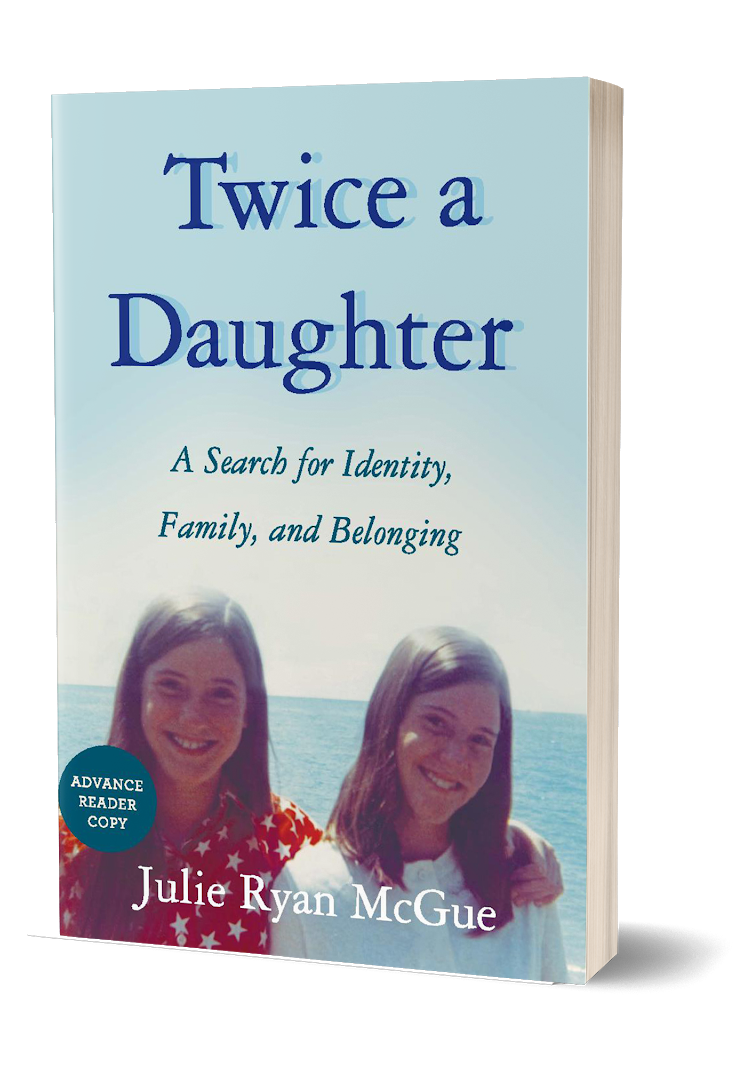 Michigan City, IN – Julie Ryan McGue is adopted. And she is also a twin. But because their adoption was closed, she and her sister lack both a health history and the names of their birth parents — which becomes pertinent for Julie when, at 48 years old, she finds herself facing several serious health issues. McGue’s poignant and hopeful debut memoir, “Twice a Daughter,” (May 11, 2021, She Writes Press) chronicles the complex search for her uncharted family history.
Michigan City, IN – Julie Ryan McGue is adopted. And she is also a twin. But because their adoption was closed, she and her sister lack both a health history and the names of their birth parents — which becomes pertinent for Julie when, at 48 years old, she finds herself facing several serious health issues. McGue’s poignant and hopeful debut memoir, “Twice a Daughter,” (May 11, 2021, She Writes Press) chronicles the complex search for her uncharted family history.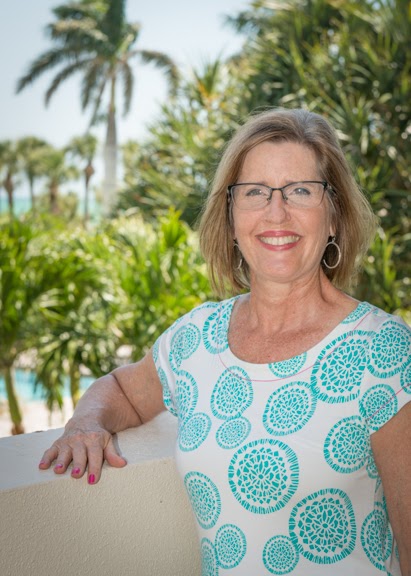 JULIE RYAN McGUE is an author, a domestic adoptee and an identical twin. She writes extensively about finding out who you are, where you belong and making sense of it.
JULIE RYAN McGUE is an author, a domestic adoptee and an identical twin. She writes extensively about finding out who you are, where you belong and making sense of it.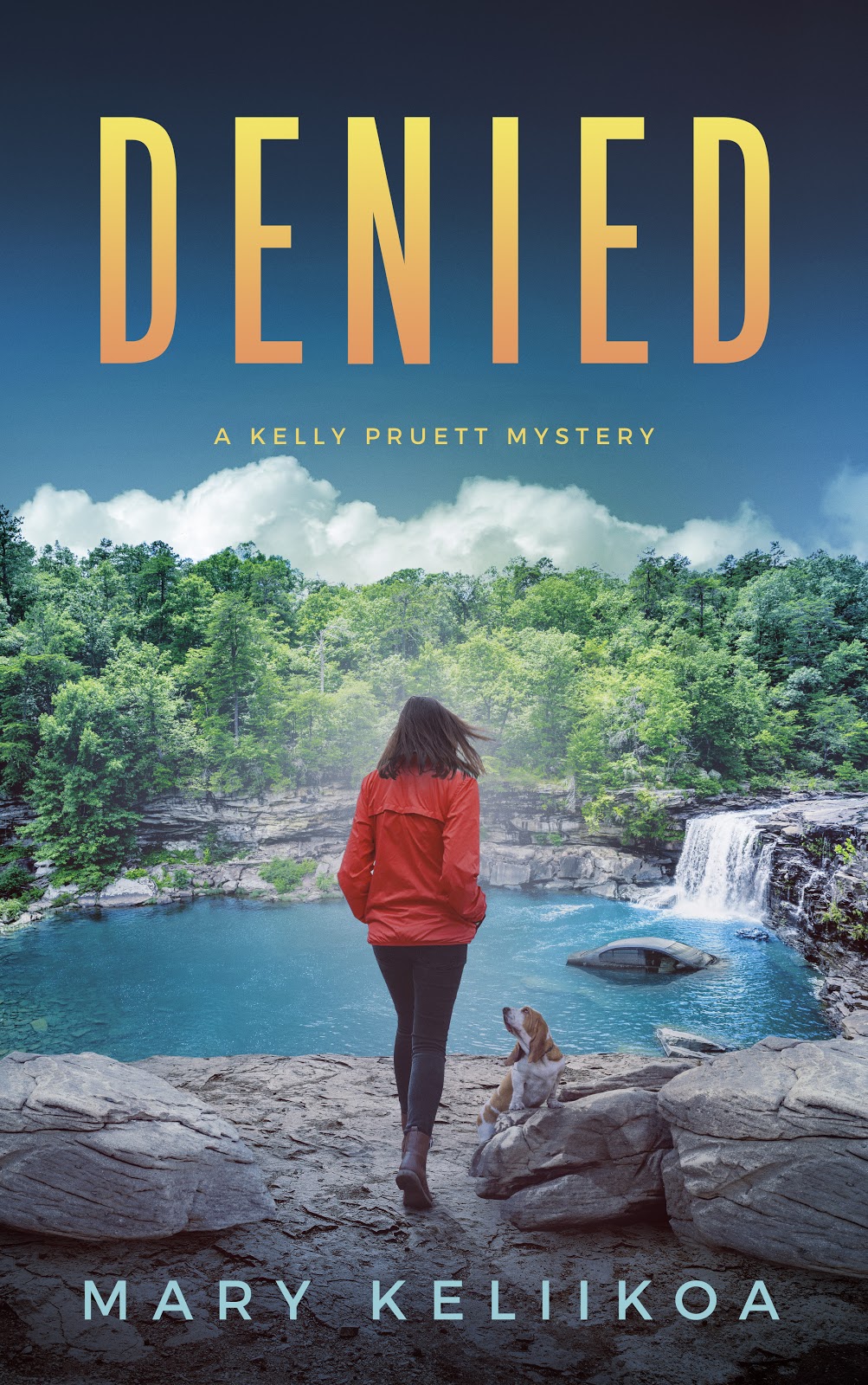 VANCOUVER, Washington, USA – In Mary Keliikoa’s Kelly Pruett Mystery series, a grieving single mother inherits her late father’s PI business, and begins tackling mysteries on her own, leading her into dangerous territory.
VANCOUVER, Washington, USA – In Mary Keliikoa’s Kelly Pruett Mystery series, a grieving single mother inherits her late father’s PI business, and begins tackling mysteries on her own, leading her into dangerous territory.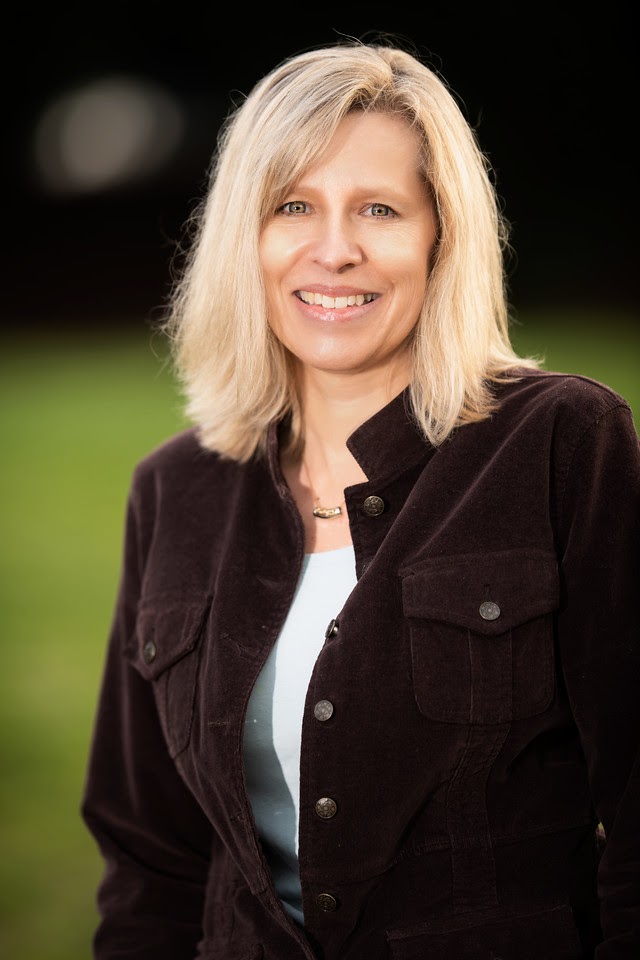 MARY KELIIKOA is the author of the Lefty, Agatha, and Anthony award nominated PI Kelly Pruett mystery series, as well as the upcoming Misty Pines mystery series featuring Sheriff Jax Turner slated for release in September 2022. She has had mystery shorts published in Woman’s World and in the anthology Peace, Love, and Crime: Crime Fiction Inspired by the Songs of the ’60s. She spent the first 18 years of her adult life working around lawyers. Combining her love of all things legal and books, she creates twisting mysteries where justice prevails.
MARY KELIIKOA is the author of the Lefty, Agatha, and Anthony award nominated PI Kelly Pruett mystery series, as well as the upcoming Misty Pines mystery series featuring Sheriff Jax Turner slated for release in September 2022. She has had mystery shorts published in Woman’s World and in the anthology Peace, Love, and Crime: Crime Fiction Inspired by the Songs of the ’60s. She spent the first 18 years of her adult life working around lawyers. Combining her love of all things legal and books, she creates twisting mysteries where justice prevails.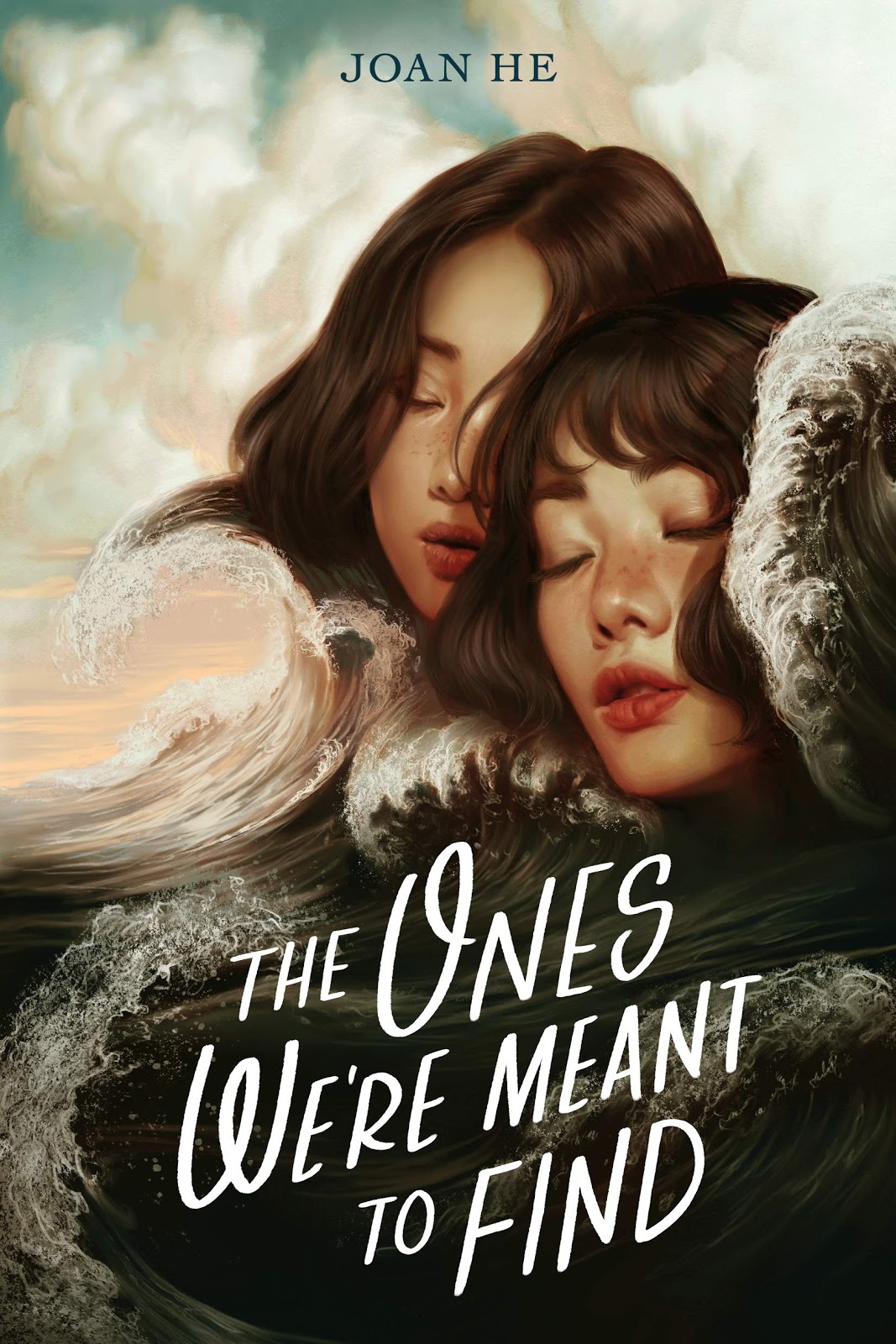 Philadelphia, PA – Acclaimed author Joan He (Descendant of the Crane) is releasing her first new YA novel since her highly successful debut: a beguiling blend of intrigue, mystery, and “cli-fi” (climate science fiction), The Ones We’re Meant to Find (Roaring Brook/Macmillan, May 4, 2021). He will donate $1 to the Ocean Conservancy for every book that is pre-ordered, supporting her commitment to addressing climate change both on and off the page.
Philadelphia, PA – Acclaimed author Joan He (Descendant of the Crane) is releasing her first new YA novel since her highly successful debut: a beguiling blend of intrigue, mystery, and “cli-fi” (climate science fiction), The Ones We’re Meant to Find (Roaring Brook/Macmillan, May 4, 2021). He will donate $1 to the Ocean Conservancy for every book that is pre-ordered, supporting her commitment to addressing climate change both on and off the page.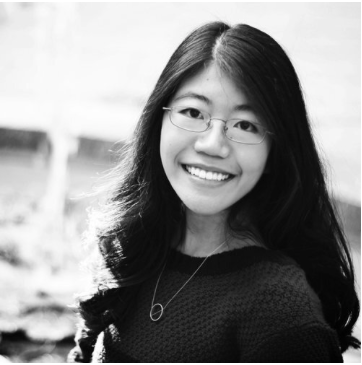 JOAN HE was born and raised in Philadelphia but still will, on occasion, lose her way. At a young age, she received classical instruction in oil painting before discovering that storytelling was her favorite form of expression. She studied Psychology and East Asian Languages and Cultures at the University of Pennsylvania and currently writes from a desk overlooking the Delaware River. Descendant of the Crane is her debut young adult fantasy. Her next novel, The Ones We’re Meant to Find, will be forthcoming from Macmillan on May 4th, 2021. Learn more at
JOAN HE was born and raised in Philadelphia but still will, on occasion, lose her way. At a young age, she received classical instruction in oil painting before discovering that storytelling was her favorite form of expression. She studied Psychology and East Asian Languages and Cultures at the University of Pennsylvania and currently writes from a desk overlooking the Delaware River. Descendant of the Crane is her debut young adult fantasy. Her next novel, The Ones We’re Meant to Find, will be forthcoming from Macmillan on May 4th, 2021. Learn more at 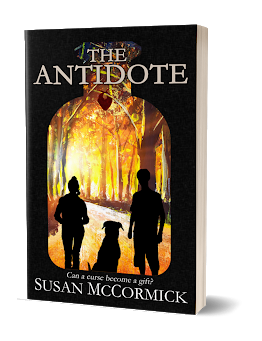 SEATTLE – Longtime physician and successful mystery author Susan McCormick is back with a new novel sure to enchant readers of all ages. “The Antidote” (May 5, 2021, The Wild Rose Press) is her first foray into middle grade fantasy, though readers will be left hoping it won’t be her last.
SEATTLE – Longtime physician and successful mystery author Susan McCormick is back with a new novel sure to enchant readers of all ages. “The Antidote” (May 5, 2021, The Wild Rose Press) is her first foray into middle grade fantasy, though readers will be left hoping it won’t be her last.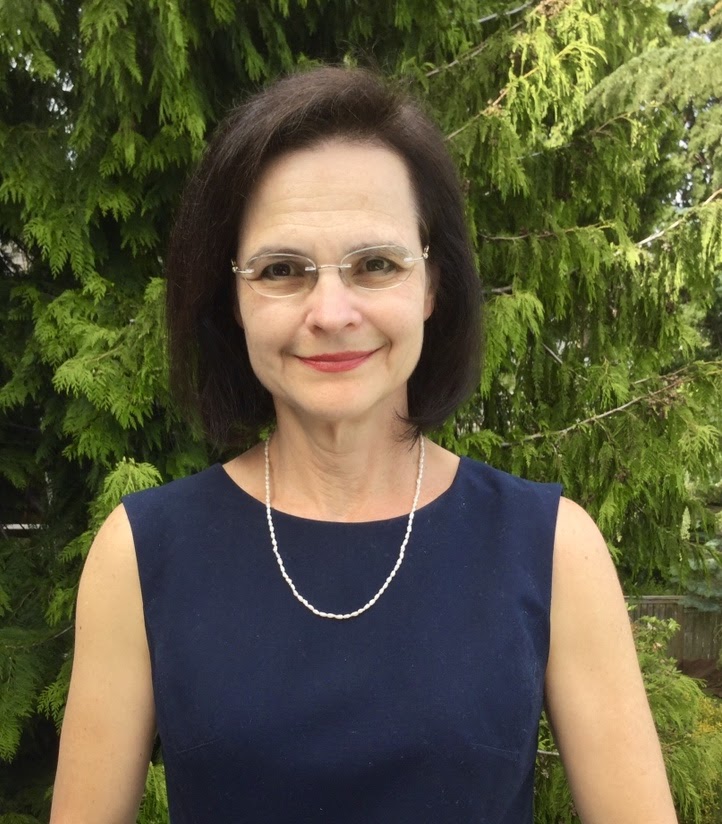
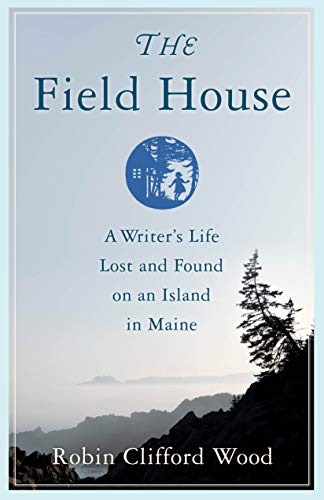 Cranberry Isles, MAINE—A compelling blend of biography and memoir, “The Field House” (She Writes Press, May 4, 2021) recounts the remarkable life of writer Rachel Field from the perspective of a woman who lived in Field’s old, neglected island home in Maine, sparking a unique sisterhood across time.
Cranberry Isles, MAINE—A compelling blend of biography and memoir, “The Field House” (She Writes Press, May 4, 2021) recounts the remarkable life of writer Rachel Field from the perspective of a woman who lived in Field’s old, neglected island home in Maine, sparking a unique sisterhood across time.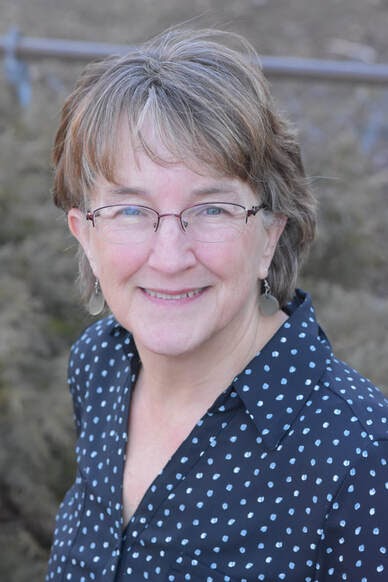 ROBIN CLIFFORD WOOD has a BA from Yale University, an MA in English from the University of Rochester, and an MFA in creative writing from the Stonecoast program at the University of Southern Maine. During twenty-five years as a full-time mom, she published local human-interest features in New Hampshire, New York, and Massachusetts and spent seven years as a regular columnist, first in Massachusetts, then for Maine’s Bangor Daily News. She began teaching college writing in 2015. Her articles have appeared in Port City Life magazine, Bangor Metro, and Solstice literary magazine, which published her powerful essay “How Do You Help Your Parents Die?” in its spring 2019 issue. Her award-winning poetry received national recognition from the 2020 Writer’s Digest Competition. Wood lives in central Maine with her husband and dogs. The Field House is her first book. For more information, visit
ROBIN CLIFFORD WOOD has a BA from Yale University, an MA in English from the University of Rochester, and an MFA in creative writing from the Stonecoast program at the University of Southern Maine. During twenty-five years as a full-time mom, she published local human-interest features in New Hampshire, New York, and Massachusetts and spent seven years as a regular columnist, first in Massachusetts, then for Maine’s Bangor Daily News. She began teaching college writing in 2015. Her articles have appeared in Port City Life magazine, Bangor Metro, and Solstice literary magazine, which published her powerful essay “How Do You Help Your Parents Die?” in its spring 2019 issue. Her award-winning poetry received national recognition from the 2020 Writer’s Digest Competition. Wood lives in central Maine with her husband and dogs. The Field House is her first book. For more information, visit 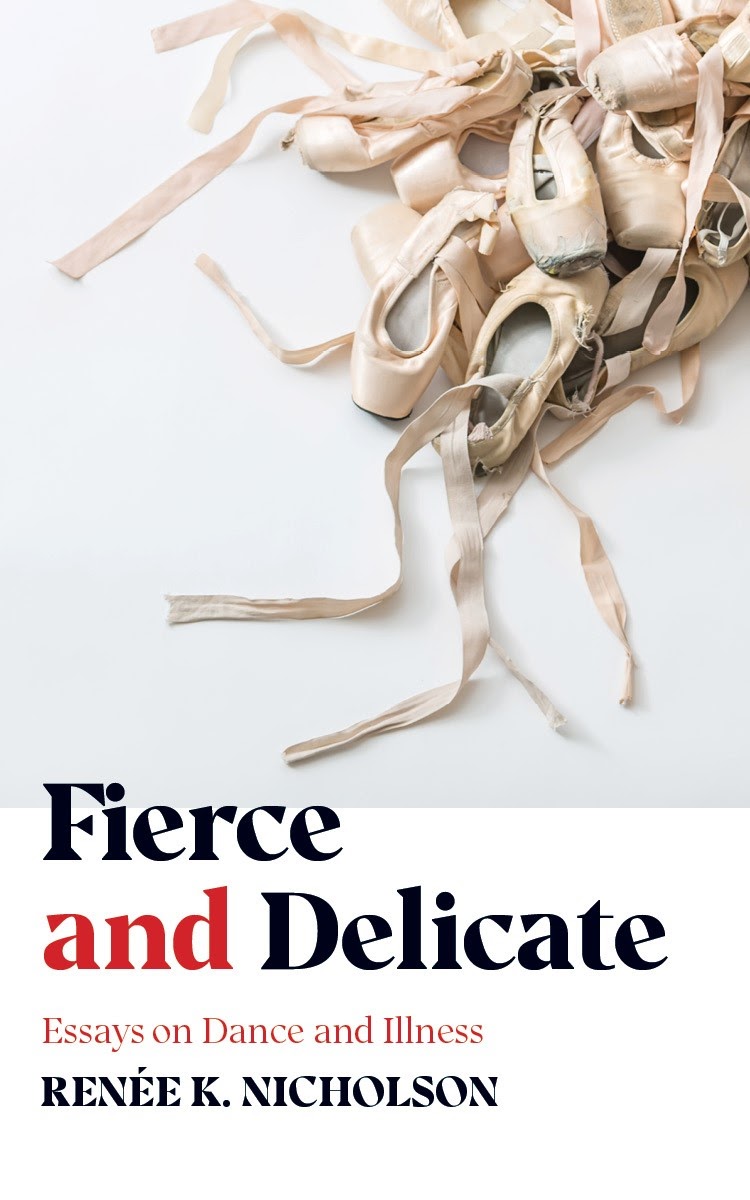 Morgantown, West Virginia– Renée Nicholson’s professional training in ballet had both moments of magnificence and moments of torment, from fittings of elaborate platter tutus to strange language barriers and unrealistic expectations of the body. In “Fierce and Delicate” (WVU Press, May 1, 2021) she looks back on the often confused and driven self she had been shaped into—always away from home, with friends who were also rivals, influenced by teachers in ways sometimes productive and at other times bordering on sadistic—and finds beauty in the small roles she performed. When, inevitably, Nicholson moved on from dancing, severed from her first love by illness, she discovered that she retained the lyricism and narrative of ballet even as she negotiated life with rheumatoid arthritis.
Morgantown, West Virginia– Renée Nicholson’s professional training in ballet had both moments of magnificence and moments of torment, from fittings of elaborate platter tutus to strange language barriers and unrealistic expectations of the body. In “Fierce and Delicate” (WVU Press, May 1, 2021) she looks back on the often confused and driven self she had been shaped into—always away from home, with friends who were also rivals, influenced by teachers in ways sometimes productive and at other times bordering on sadistic—and finds beauty in the small roles she performed. When, inevitably, Nicholson moved on from dancing, severed from her first love by illness, she discovered that she retained the lyricism and narrative of ballet even as she negotiated life with rheumatoid arthritis. RENEE K. NICHOLSON splits her artistic pursuits between writing and dance with scholarship in narrative medicine. She is Associate Professor and Director of the Humanities Center at West Virginia University. She was the 2011 Emerging Writer-in-Residence at Penn State-Altoona, 2018 recipient of the Susan S. Landis Award for Distinguished Service to the Arts (WV Governor’s Arts Awards), the 2019 winner of the Outstanding Public Service Award from the Eberly College of Arts and Sciences (WVU), and the 2020 Winner of the Nicholas Evans Award for Excellence in Advising (WVU). Her books include two collections of poetry, Roundabout Directions to Lincoln Center and Post Script; a memoir-in-essays, Fierce and Delicate: Essays on Dance and Illness; and the anthology Bodies of Truth: Personal Narratives on Illness, Disability, and Medicine.
RENEE K. NICHOLSON splits her artistic pursuits between writing and dance with scholarship in narrative medicine. She is Associate Professor and Director of the Humanities Center at West Virginia University. She was the 2011 Emerging Writer-in-Residence at Penn State-Altoona, 2018 recipient of the Susan S. Landis Award for Distinguished Service to the Arts (WV Governor’s Arts Awards), the 2019 winner of the Outstanding Public Service Award from the Eberly College of Arts and Sciences (WVU), and the 2020 Winner of the Nicholas Evans Award for Excellence in Advising (WVU). Her books include two collections of poetry, Roundabout Directions to Lincoln Center and Post Script; a memoir-in-essays, Fierce and Delicate: Essays on Dance and Illness; and the anthology Bodies of Truth: Personal Narratives on Illness, Disability, and Medicine. In his new novel, author Nadiez Bahi asks an age-old question: Does God exist? Releasing on April 27, 2021, “Rethink God” explores the histories of religion and scientific understandings of human existence in a realistic but fictional narrative that Foreword Clarion Reviews says will “inspire personal and social change at the deepest levels.”
In his new novel, author Nadiez Bahi asks an age-old question: Does God exist? Releasing on April 27, 2021, “Rethink God” explores the histories of religion and scientific understandings of human existence in a realistic but fictional narrative that Foreword Clarion Reviews says will “inspire personal and social change at the deepest levels.”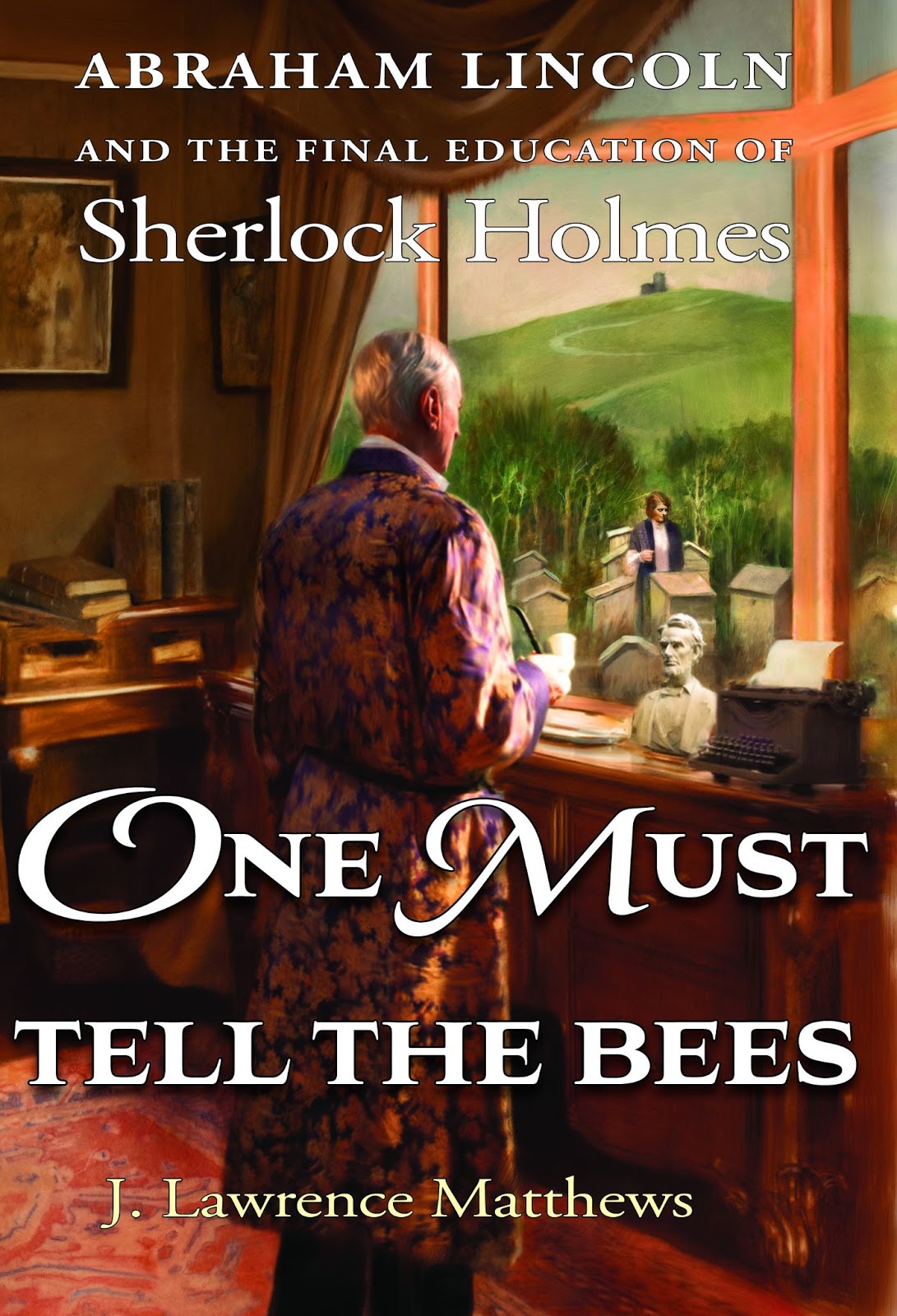 Naples, FL — Author J. Lawrence Matthews invites readers on a remarkable journey with a precocious young chemist named Holmes from the streets of London to Washington D.C. in the last year of the Civil War. This vivid, previously untold story takes place during a crucial period in history that Americans are once again seeking to understand—and may now see through the keen eyes of Sherlock Holmes, thanks to One Must Tell The Bees: The Final Education of Sherlock Holmes, (May 22, 2021, East Dean Press).
Naples, FL — Author J. Lawrence Matthews invites readers on a remarkable journey with a precocious young chemist named Holmes from the streets of London to Washington D.C. in the last year of the Civil War. This vivid, previously untold story takes place during a crucial period in history that Americans are once again seeking to understand—and may now see through the keen eyes of Sherlock Holmes, thanks to One Must Tell The Bees: The Final Education of Sherlock Holmes, (May 22, 2021, East Dean Press). J. Lawrence Matthews has been researching the events depicted in “One Must Tell the Bees: The Remarkable Life, and Death, of Sherlock Holmes” for over thirty years. He is an expert on the language and construction of the fifty six original Sherlock Holmes stories by Sir Arthur Conan Doyle, and a scholar of the American Civil War and the Emancipation Proclamation of President Abraham Lincoln — the combination of which has created this revelatory new book. Readers interested in the history behind the story and contact information will find it at
J. Lawrence Matthews has been researching the events depicted in “One Must Tell the Bees: The Remarkable Life, and Death, of Sherlock Holmes” for over thirty years. He is an expert on the language and construction of the fifty six original Sherlock Holmes stories by Sir Arthur Conan Doyle, and a scholar of the American Civil War and the Emancipation Proclamation of President Abraham Lincoln — the combination of which has created this revelatory new book. Readers interested in the history behind the story and contact information will find it at 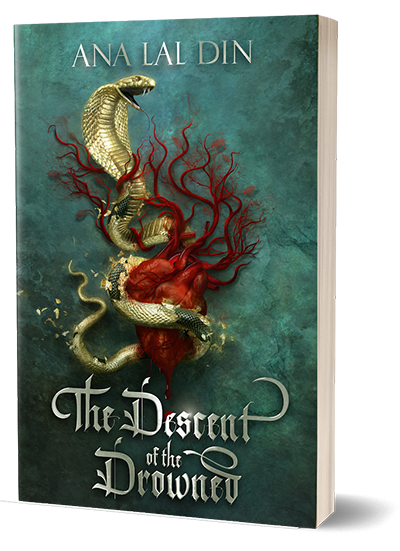 Greater Manchester, ENGLAND – She is bound to serve. He is meant to kill. Survival is their prison. Choice is their weapon. Ana Lal Din showcases her storytelling skills in her young adult debut, weaving together a harrowing narrative that examines humankind at its darkest and brightest. Set in a colonised Indo-Persian world and inspired by Pre-Islamic Arabian mythology, “The Descent of the Drowned” (March 15, 2021, White Tigress Press) weaves together tales of power, identity, redemption, and what it takes to hold on to one’s humanity in the face of devastation.
Greater Manchester, ENGLAND – She is bound to serve. He is meant to kill. Survival is their prison. Choice is their weapon. Ana Lal Din showcases her storytelling skills in her young adult debut, weaving together a harrowing narrative that examines humankind at its darkest and brightest. Set in a colonised Indo-Persian world and inspired by Pre-Islamic Arabian mythology, “The Descent of the Drowned” (March 15, 2021, White Tigress Press) weaves together tales of power, identity, redemption, and what it takes to hold on to one’s humanity in the face of devastation.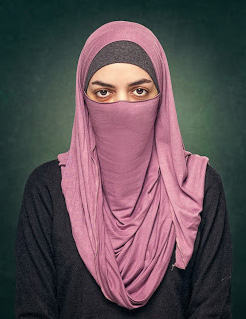 Ana Lal Din is an #ownvoices author who was born in a Danish southwestern city and raised in a small town outside Copenhagen. Passionate about culture, language, religion and social justice issues, Ana’s story worlds are usually full of all four.
Ana Lal Din is an #ownvoices author who was born in a Danish southwestern city and raised in a small town outside Copenhagen. Passionate about culture, language, religion and social justice issues, Ana’s story worlds are usually full of all four.